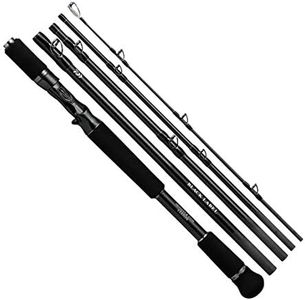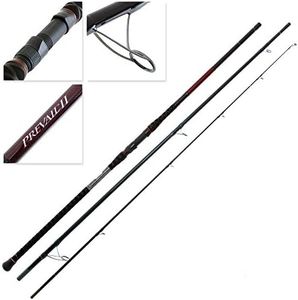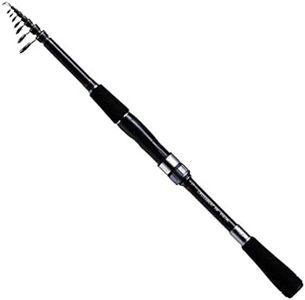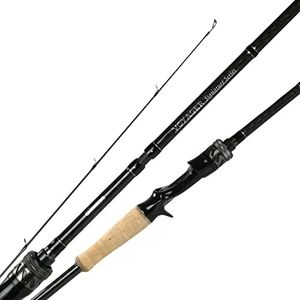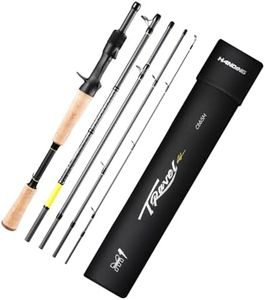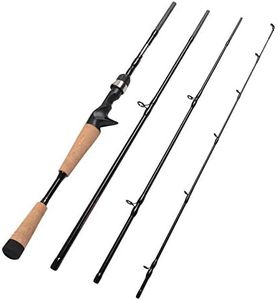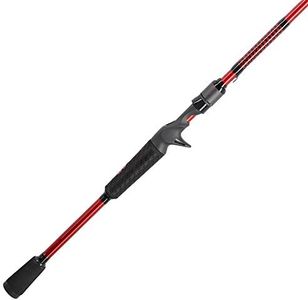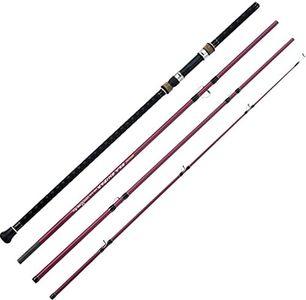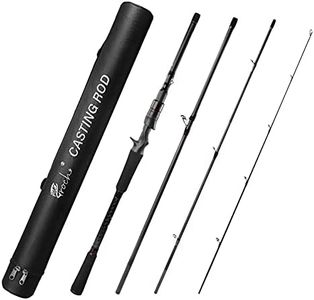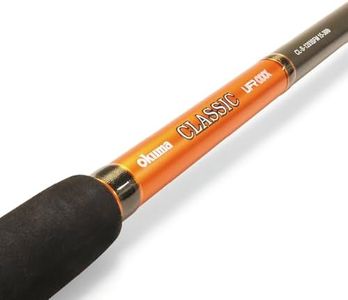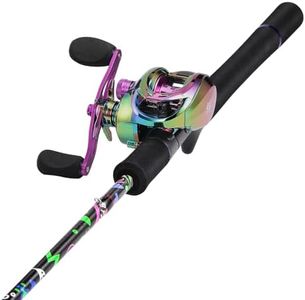We Use CookiesWe use cookies to enhance the security, performance,
functionality and for analytical and promotional activities. By continuing to browse this site you
are agreeing to our privacy policy
10 Best Casting Rods
From leading brands and best sellers available on the web.By clicking on a link to a third party's website, log data is shared with that third party.
Buying Guide for the Best Casting Rods
Choosing the right casting rod can make a big difference in your fishing experience. It's not just about picking any rod—it's about finding one that matches your style, the types of fish you want to catch, and the conditions where you'll fish most often. By understanding the various features and specifications, you can confidently select a rod that feels comfortable, performs well, and helps you get the most out of your outings. Knowing the key specs will also help you avoid rods that don't fit your needs or could be uncomfortable or ineffective, making fishing less enjoyable.Rod PowerRod power tells you how much pressure is needed to bend the rod and is typically described as ultra-light, light, medium, medium-heavy, heavy, or extra heavy. This matters because a rod's power should match the type of fish you’re targeting—a lighter rod is good for smaller fish and finesse techniques, while heavier rods are better for big fish and casting larger lures or baits. If you usually go after panfish or small bass, a light or medium-light rod might suit you, but for larger species like pike or heavy bass, you’ll want a medium-heavy or heavy rod. Think about the fish you target most and their typical size; that should help you pick the right power.
Rod ActionRod action describes how and where the rod flexes when pressure is applied, categorized as slow, moderate, or fast. Fast action rods bend mostly at the tip, providing more sensitivity and quicker hooksets, making them good for single-hook lures like worms. Slow action rods bend along more of their length, allowing for more flex and casting lighter baits farther, ideal for treble-hook lures or when fishing for species that nibble gently. Moderate action falls in between. When choosing, consider how quickly you want your rod to react and the type of lure you prefer using—a faster action is great for quick strikes, while slower actions are more forgiving and often better for beginners or those using specific techniques.
Rod LengthRod length is the measurement from the tip to the butt, usually in feet and inches, and it affects how far you can cast and how much leverage you have over the fish. Shorter rods (under 6 feet) offer greater accuracy and are good for fishing in tight spaces or from boats, while longer rods (over 7 feet) help you cast farther and hook fish more efficiently in open water. If you often fish from shore or need to cast long distances, a longer rod is helpful. For precise casts near cover or from a kayak or boat, a shorter rod is easier to handle. Choose a length based on the water you fish and the ways you like to cast.
Rod MaterialCasting rods are most commonly made from graphite, fiberglass, or a blend of both. Graphite rods are lighter, more sensitive, and stiffer, making them great for feeling bites and making accurate casts, while fiberglass rods are more durable and flexible, often preferred for fighting big, strong fish or when you need added toughness. Composite rods combine both materials for a balance of sensitivity and strength. If you value sensitivity and lighter weight, go for graphite; if you want toughness and less chance of breakage, try fiberglass. Consider what feels best in your hand and the kind of situations you'll face.
Handle TypeHandles can be made from materials like cork or EVA foam and come in different lengths and shapes. Cork is comfortable and sensitive to vibrations but wears down faster, while EVA foam is more durable and easier to clean. Longer handles help with two-handed casting and are good for bigger fish, while shorter handles work well for one-handed casting and tight spaces. Choose a handle that feels comfortable in your hand and matches the casting style you prefer.
Guide QualityGuides are the small loops along the rod’s length that direct the fishing line. Their quality affects casting distance, accuracy, and durability of the rod. Higher-quality materials (like ceramic or stainless steel) reduce friction, help avoid line wear, and give smoother casts, while lower-quality guides might cause snags or wear out faster. If you use braided lines or fish often, opt for rods with sturdy, smooth guides to protect your gear and line.
